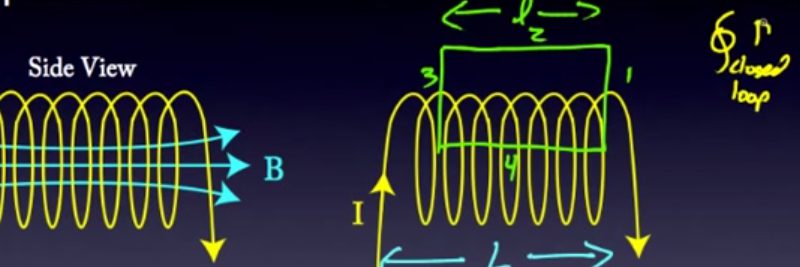Andre-Marie Ampere was born in 1775 to a fairly prosperous family during the height of the French enlightenment period. He was interested in mathematics and physics from an early age, but his family encouraged an in-depth study of Latin. Much of his life followed the typical pattern that most people throughout history have seen. He got married, had children, and settled down for a good life. That all changed, however, when his wife passed away just 4 years after they were married.
That caused Ampere to move to Paris to pursue teaching. He was appointed as a professor of mathematics and this eventually led him toward physics and scientific experimentation. It also led him to the discovery we know him for today: electromagnetism.
What Is Ampere’s Law?
Andre Ampere was unique in that he would apply the mathematic principles and formulas with which he was so familiar to the world of science. This eventually led to the development of Ampere’s Law, which basically states that action of two mutual lengths of current are related to the length and intensity of the current. He applied this principle to magnetism as well and showed how magnetism and current were interrelated. In short, this means that a magnetic field can be generated when two parallel wires are charged with electricity and influenced based on their length and the strength of the current.
For his work, he’s often called the Father of Electromagnetism. Because of his work, the standard measurements of current are called “amps,” which is short for the formal term “ampere,” directly named after this man. In order to measure these amps initially, Ampere had to come up with a device that could indicate how strong the current was. That’s where the invention of the astatic needle came into being, which is something you can still see today on a modern galvanometer.
What Is Notable About Andres Ampere?
For the most part, Andres Ampere was a self-taught individual. He never had any higher levels of formal education, even though he was appointed as a professor of mathematics. You could always find Ampere looking through books, studying the results of scientific experiments, and being curious about how the effects of electricity and magnetism worked together mathematically.
The story of Ampere doesn’t end on a happy tone. He contracted a sickness that caused a high fever for some time. It caused a high level of constant fatigue and he quickly grew to hate the work that he had loved so much over the years before. Ampere eventually died in 1836, but less than 50 years later he would be forever immortalized as the standard unit of electrical measurement was called an ampere by international treaty.
His final work, called The Natural Classification of All Human Knowledge, was published by Ampere’s son after his death and shows the world where this great mind was headed before becoming ill. What can everyone learn from this inventor and mathematician? That a little hard work and a lot of passion can take you quite far in life.
Strong proponent of individual liberty and free speech. My goal is to present information that expands our awareness of crucial issues and exposes the manufactured illusion of freedom that we are sold in America. Question everything because nothing is what it seems.



















